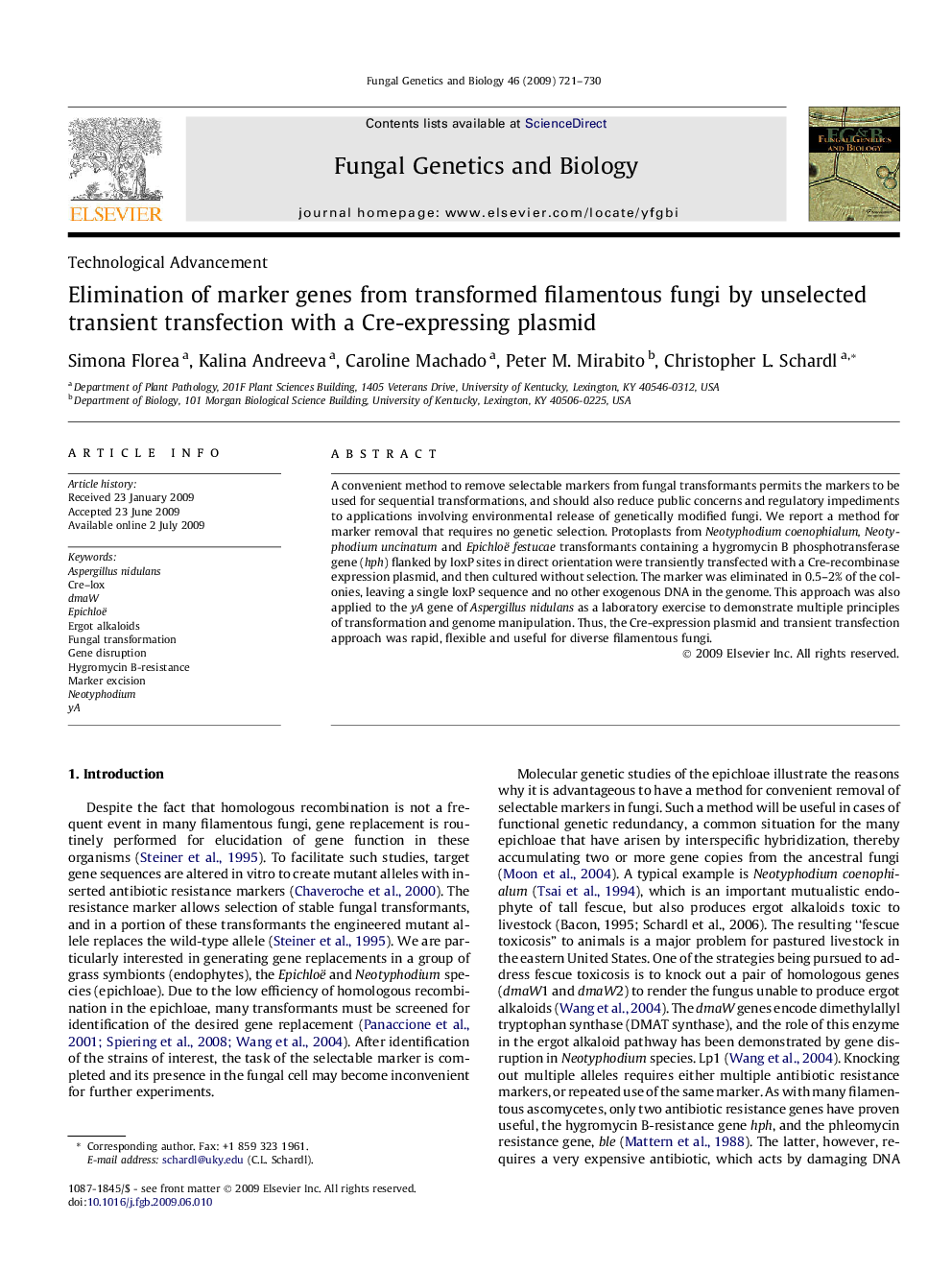| Article ID | Journal | Published Year | Pages | File Type |
|---|---|---|---|---|
| 2181115 | Fungal Genetics and Biology | 2009 | 10 Pages |
Abstract
A convenient method to remove selectable markers from fungal transformants permits the markers to be used for sequential transformations, and should also reduce public concerns and regulatory impediments to applications involving environmental release of genetically modified fungi. We report a method for marker removal that requires no genetic selection. Protoplasts from Neotyphodium coenophialum, Neotyphodium uncinatum and Epichloë festucae transformants containing a hygromycin B phosphotransferase gene (hph) flanked by loxP sites in direct orientation were transiently transfected with a Cre-recombinase expression plasmid, and then cultured without selection. The marker was eliminated in 0.5-2% of the colonies, leaving a single loxP sequence and no other exogenous DNA in the genome. This approach was also applied to the yA gene of Aspergillus nidulans as a laboratory exercise to demonstrate multiple principles of transformation and genome manipulation. Thus, the Cre-expression plasmid and transient transfection approach was rapid, flexible and useful for diverse filamentous fungi.
Keywords
Related Topics
Life Sciences
Biochemistry, Genetics and Molecular Biology
Cell Biology
Authors
Simona Florea, Kalina Andreeva, Caroline Machado, Peter M. Mirabito, Christopher L. Schardl,
